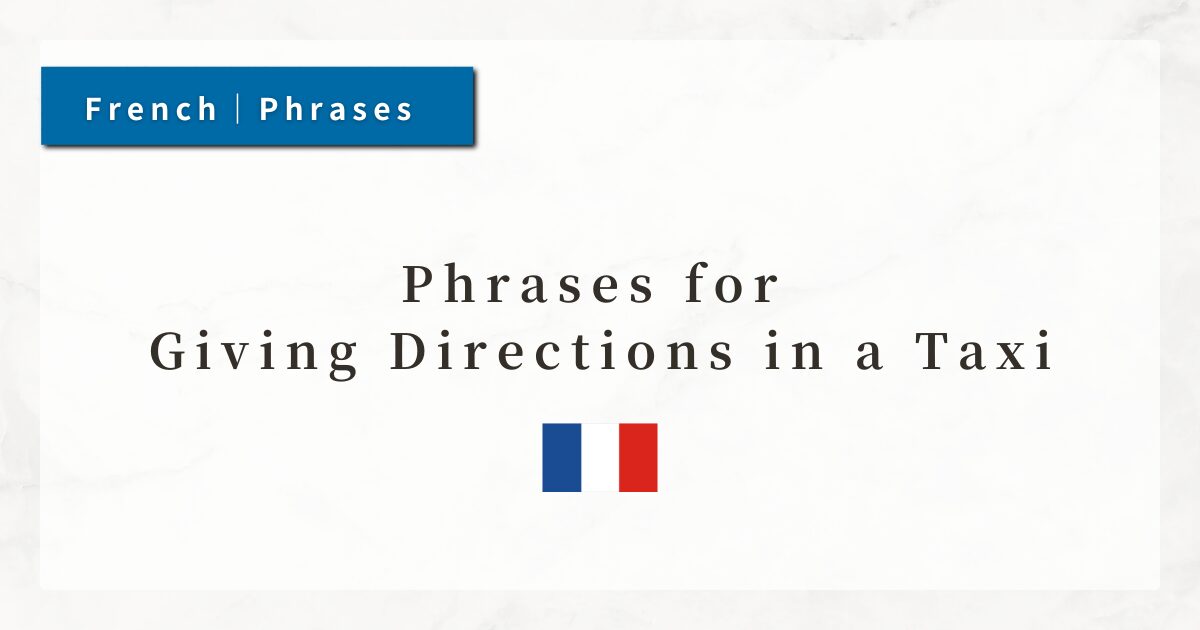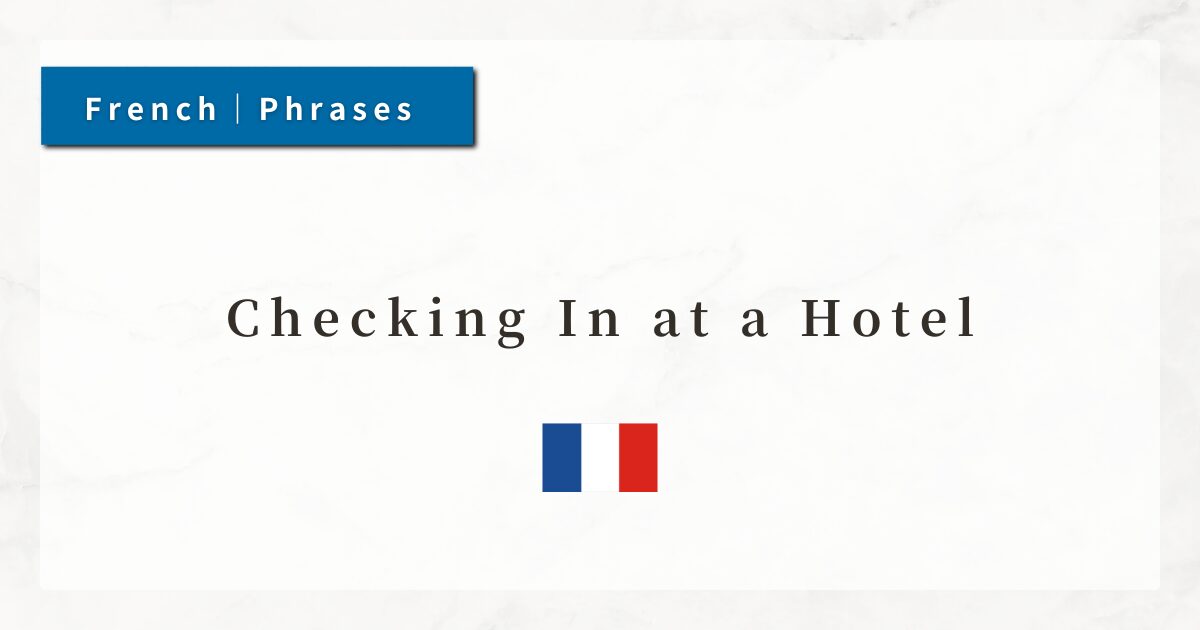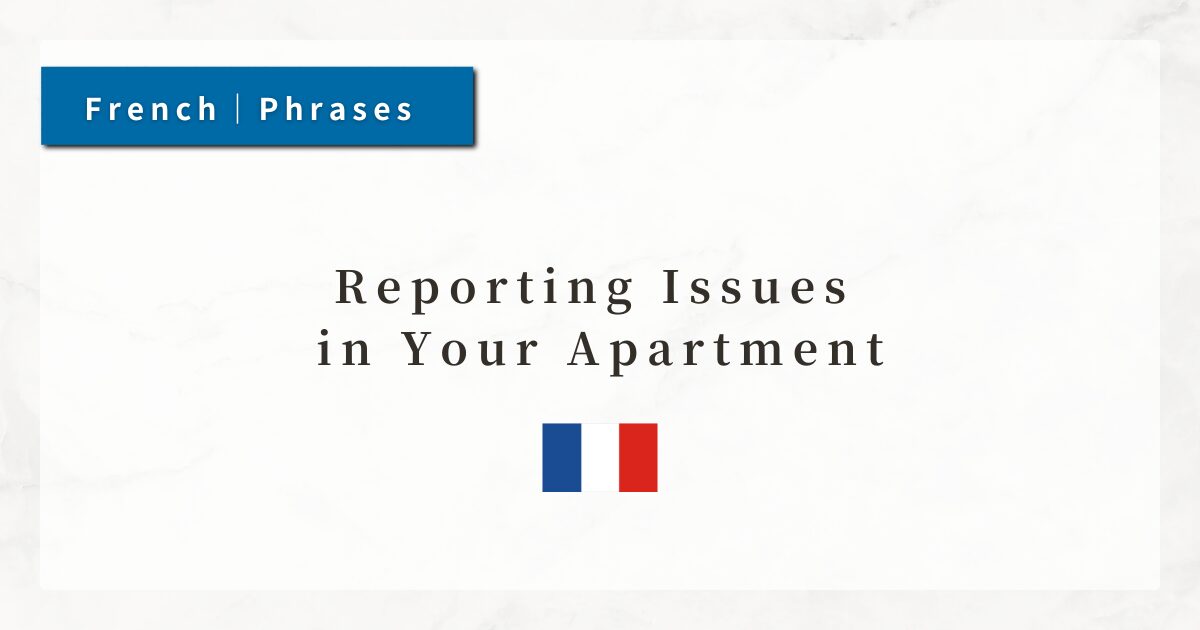#9 Phrases for Giving Directions in a Taxi|French Travel Expressions

When taking a taxi in France, you may need to do more than just state your destination. Situations often arise where you must say things like “Turn right,” or “Stop here.”
Even when you cannot rely on a map or GPS, knowing a few simple phrases will allow you to travel with confidence.
In this lesson, we will learn practical French phrases for explaining directions and politely giving instructions to a taxi driver.
Dialogue

Bonjour, je voudrais aller à la gare Montparnasse, s’il vous plaît.
(Hello, I would like to go to Montparnasse station, please.)

D’accord. Par quelle route vous préférez passer ?
(Alright. Which route would you prefer to take?)

Prenez l’avenue Victor Hugo et tournez à gauche au prochain carrefour.
(Take Victor Hugo Avenue and turn left at the next intersection.)

Très bien. Et après ?
(Very well. And after that?)

Continuez tout droit jusqu’au feu, puis arrêtez-vous là.
(Go straight ahead until the traffic light, then stop there.)

D’accord.
(Alright.)
1. Polite Requests with “Je voudrais + infinitive”
When stating your destination in a taxi, politeness is key.
In French, the structure “Je voudrais + infinitive” (I would like to …) is a soft and polite way of making a request.
- Je voudrais réserver une table.
(I would like to reserve a table.) - Je voudrais commander un café.
(I would like to order a coffee.)
For taxis, use “Je voudrais aller à + [place]” to clearly express where you want to go.
This form literally means “I would like to go to …,” which avoids sounding forceful and gives a polite impression.
2. Giving Directions with the Imperative
When giving instructions to the driver, the imperative is most commonly used.
- Prenez
→ Take … / Go along … - Tournez
→ Turn … - Continuez
→ Continue … / Go straight …
Although the imperative can sound direct, it is the natural and standard way to give directions in French.
When combined with a polite tone or “s’il vous plaît,” it does not come across as rude.
3. Indicating Directions: à gauche / à droite
To give clear instructions, use basic directional phrases:
- à gauche → to the left
- à droite → to the right
- tout droit → straight ahead
Adding phrases like “au prochain carrefour” (at the next intersection) makes your directions more precise.
4. Using “jusqu’à / jusqu’au” for “Until”
To indicate “until” or “up to” a place, use “jusqu’à + location.”
- Continuez tout droit jusqu’au feu.
(Go straight ahead until the traffic light.) - Continuez jusqu’à la place.
(Go straight until the square.)
Note: when followed by a masculine noun, “jusqu’à + le” contracts to “jusqu’au ”(e.g., jusqu’au feu).
5. Asking the Driver to Stop: Arrêtez-vous là
When you arrive near your destination, use “Arrêtez-vous là” (Stop there).
- Arrêtez-vous ici.
(Stop here.) - Vous pouvez vous arrêter ici ?
(Could you stop here?)
→ even more polite when phrased as a question
Summary
- Je voudrais aller à ~
→ A polite way to state your destination (“I would like to go to ~”). - Prenez / Tournez / Continuez
→ The basic imperative forms for giving driving instructions. - à gauche / à droite / au prochain carrefour
→ Useful prepositional phrases for directions. - Arrêtez-vous là:
→ A practical expression for asking the driver to stop safely.




